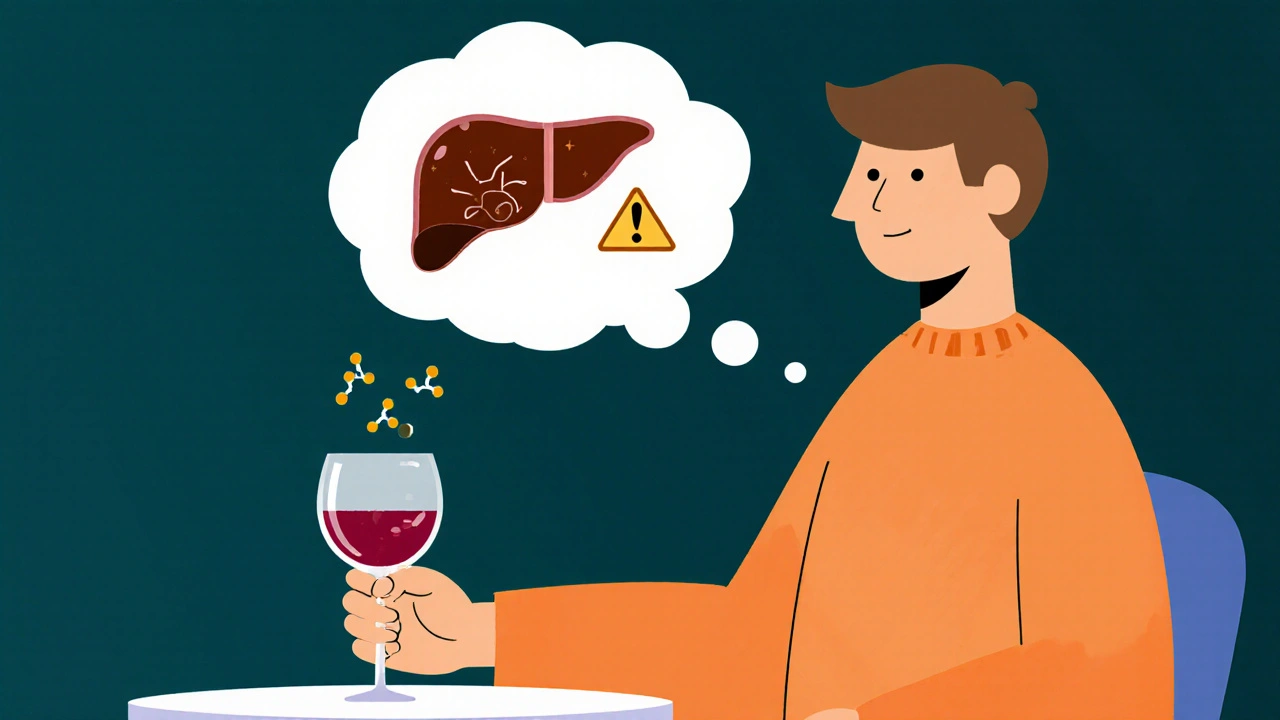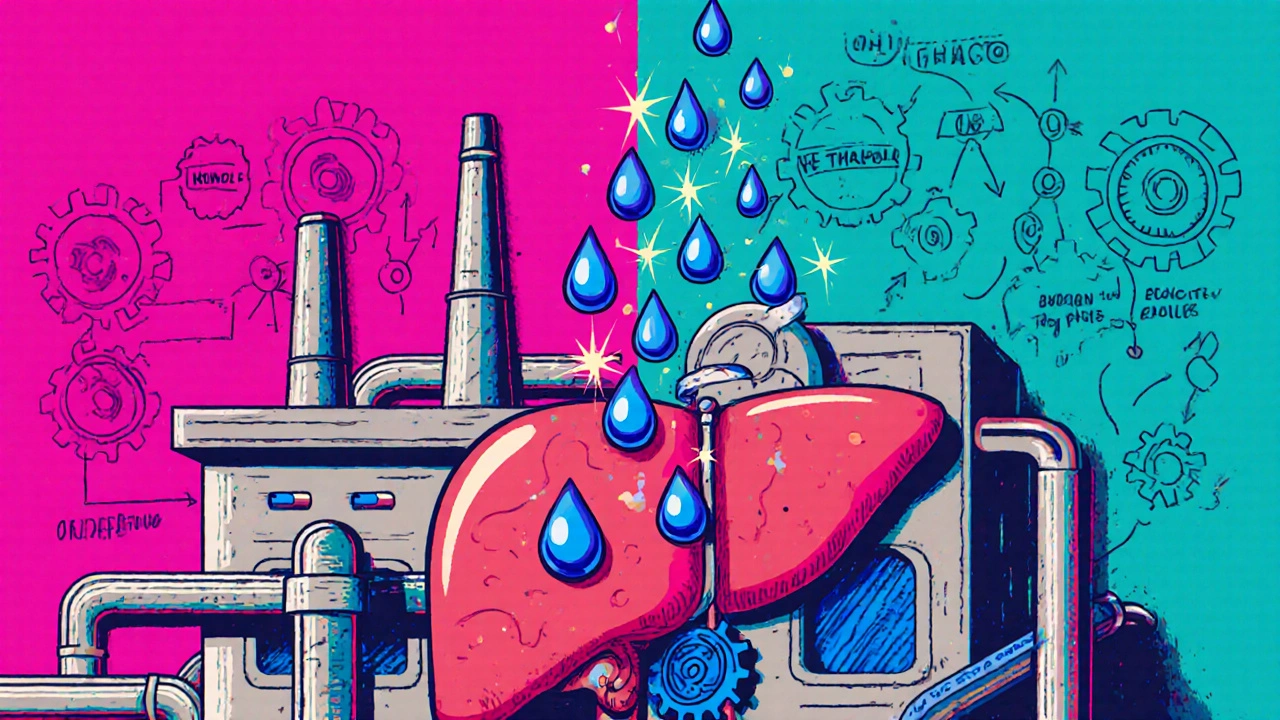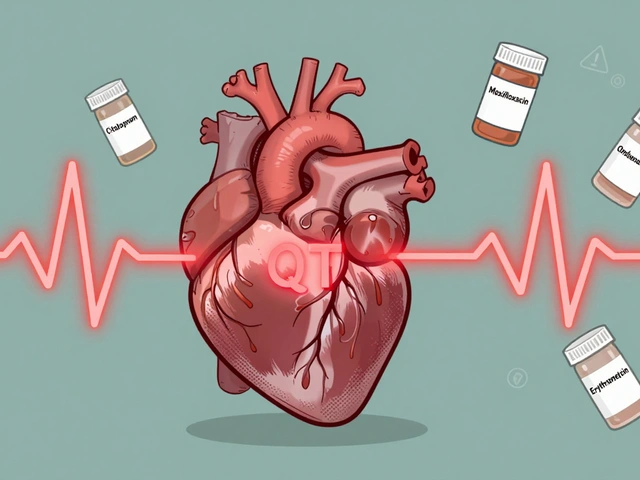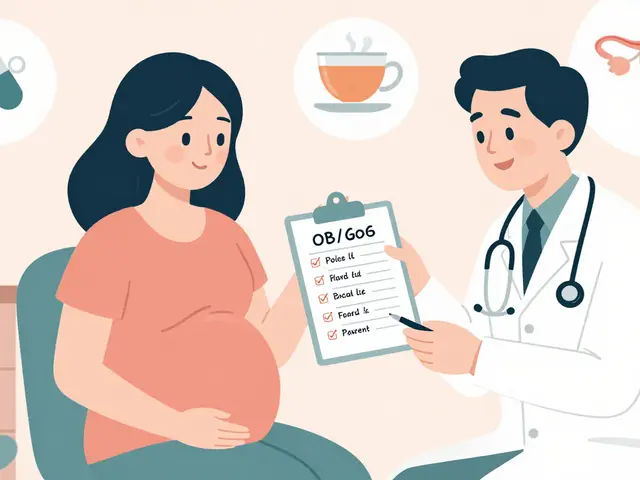
Porphyria Alcohol Safety Calculator
Alcohol Safety Assessment
Safe Alcohol Threshold
Select your porphyria type and enter your alcohol amount
Risk Level
Symptoms to Watch For
After consuming alcohol, monitor for these early signs:
- Abdominal pain
- Dark urine
- Nausea/vomiting
- Skin blisters
- Confusion/tremors
When you hear the phrase porphyria and alcohol, it usually sparks a mix of curiosity and concern. If you or a loved one lives with porphyria, you’ve probably wondered whether that glass of wine or beer is a harmless treat or a hidden danger. This guide breaks down everything you need to know - from how alcohol interacts with the heme biosynthesis pathway to practical tips for staying safe while still enjoying social moments.
Porphyria is a group of rare metabolic disorders caused by a malfunction in the heme production pathway. It can manifest in many ways, from severe abdominal pain to blistering skin lesions. Alcohol is a psychoactive substance found in beverages such as beer, wine, and spirits that is metabolized primarily by the liver. When the two meet, the result depends on the type of porphyria, your genetics, and how much you drink.Key Takeaways
- Alcohol can trigger or worsen attacks in most types of hepatic porphyria, especially Acute Intermittent Porphyria (AIP).
- Even small amounts of alcohol may be risky for some patients; safe limits vary widely.
- Identifying personal trigger thresholds and using a symptom diary are crucial steps.
- Medical management-including hemin infusions and avoiding other hepatotoxic drugs-helps reduce attack frequency.
- Open communication with a healthcare team ensures a tailored, realistic plan.
Understanding Porphyria Types That React to Alcohol
Not all porphyrias react the same way to alcohol. The ones most sensitive are the hepatic varieties, where the liver’s role in heme synthesis is central.
- Acute Intermittent Porphyria (AIP): Caused by a deficiency of Porphobilinogen Deaminase. Symptoms include severe abdominal pain, nausea, and neurovisceral disturbances. Alcohol is a well‑documented trigger.
- Hepatic Porphyria (including AIP, hereditary coproporphyria, and variegate porphyria): All share a liver‑centric defect, making them vulnerable to substances that stress hepatic metabolism, like ethanol.
- Porphyria Cutanea Tarda (PCT): A skin‑dominant form linked to reduced Uroporphyrinogen Decarboxylase activity. While alcohol doesn’t usually cause acute attacks, it can exacerbate skin lesions.
Understanding which type you have is the first step toward managing alcohol exposure.
Why Alcohol Can Spark an Attack
Alcohol’s impact on porphyria boils down to three biochemical mechanisms:
- Induction of hepatic enzymes: Ethanol increases the activity of cytochrome P450 enzymes, which demand more heme. The body tries to produce more heme, overloading a defective pathway.
- Oxidative stress: Metabolizing alcohol generates reactive oxygen species, further taxing the liver and intensifying the production of toxic porphyrin precursors.
- Depletion of nutrients: Chronic drinking reduces levels of vitamin B6 and iron, both essential cofactors for the heme‑biosynthesis enzymes.
The result is a buildup of porphobilinogen and aminolevulinic acid, the culprits behind neurovisceral and cutaneous symptoms.

Recognizing Early Signs of an Alcohol‑Triggered Attack
Catch‑the‑wave early and you can often abort a full‑blown crisis. Look out for these red flags after drinking:
- Sudden, intense abdominal pain that doesn’t respond to usual painkillers.
- Nausea, vomiting, or an unexplained loss of appetite.
- Dark urine that may appear reddish or cola‑colored.
- New or worsening skin blisters, especially on hands or forearms.
- Confusion, anxiety, or unexplained tremors.
If any of these appear within 24‑48 hours of alcohol consumption, contact your clinician right away.
Creating a Personal Alcohol‑Safety Plan
One size does not fit all. Here’s a step‑by‑step framework you can customize:
- Know your baseline: Record the type of porphyria, your genetic mutation (if known), and past attack triggers.
- Log every drink: Use a simple spreadsheet or phone app to note the drink type, volume, and time.
- Set a personal limit: Start with the lowest possible amount-often a half‑standard drink-and see how you feel.
- Monitor symptoms: For the next 48 hours, track any of the early signs listed above.
- Adjust or abstain: If symptoms appear, reduce the limit or stop drinking completely. Discuss the pattern with your doctor.
Most patients find that complete abstinence is the safest route, but a carefully controlled, low‑dose approach can work for some under medical supervision.
Medical Strategies to Reduce Alcohol‑Related Risk
Beyond lifestyle choices, several treatment options help keep the heme pathway in check.
- Hemin (Panhematin): Intravenous hemin supplies the missing heme, shutting down the overactive enzyme cascade. It’s the gold standard for acute attacks.
- Glucose loading: High‑dose glucose infusions can blunt the pathway’s demand for heme, useful as a short‑term bridge.
- Avoidance of hepatotoxic drugs: Certain anticonvulsants, sulfonamides, and hormonal contraceptives can act like alcohol in triggering attacks.
- Vitamin and mineral supplementation: Adequate B6, zinc, and iron support enzyme function and may lessen the impact of occasional alcohol.
All interventions should be coordinated with a specialist in metabolic disorders or a hepatologist familiar with porphyria.

Comparison of Hepatic Porphyria Types and Alcohol Sensitivity
| Porphyria Type | Key Enzyme Deficiency | Typical Alcohol Trigger Threshold* | Primary Symptoms After Alcohol |
|---|---|---|---|
| Acute Intermittent Porphyria (AIP) | Porphobilinogen Deaminase | Any amount; even 1‑2 drinks | Severe abdominal pain, neuro‑visceral signs |
| Hereditary Coproporphyria (HCP) | Coproporphyrinogen Oxidase | ~2‑3 standard drinks | Abdominal pain, photosensitive skin lesions |
| Variegate Porphyria (VP) | Protoporphyrinogen Oxidase | ~3‑4 drinks | Mixed neuro‑visceral and cutaneous flare‑ups |
| Porphyria Cutanea Tarda (PCT) | Uroporphyrinogen Decarboxylase | Higher tolerance; >5 drinks may worsen skin | Blistering, hyperpigmentation, milia |
*Thresholds are approximate and vary per individual. Always start lower and observe.
Frequently Asked Questions
Can I drink any type of alcohol safely?
No. Different drinks have different ethanol concentrations, and cocktails often contain additional hepatotoxic mixers. Pure spirits, wine, and beer all deliver ethanol, which can trigger the same pathway. The safest approach is to limit total ethanol intake, not just pick a “safe” beverage.
Does occasional binge drinking increase long‑term risk?
Yes. Even a single binge episode can cause a sudden rise in heme‑demanding enzymes, leading to an acute attack that could require hospitalization. Repeated binges compound liver stress and raise the baseline risk of future attacks.
Are there any alcohol‑free alternatives that mimic social drinking?
Absolutely. Non‑alcoholic wines, beers, and mocktails based on herbs and spices can provide the ritual without ethanol. Pair them with a favorite snack and you’ll still feel part of the gathering.
If I’m on hemin therapy, can I still drink?
Hemin reduces the likelihood of an attack, but it does not eliminate the biochemical trigger that alcohol creates. Most clinicians advise complete abstinence while on regular hemin prophylaxis.
What other lifestyle factors should I watch alongside alcohol?
Fasting, extreme dieting, hormonal contraceptives, certain antibiotics, and high‑intensity stress are all known triggers. Treat alcohol as one piece of a larger puzzle and aim for a balanced, low‑stress lifestyle.
Putting It All Together
Managing porphyria isn’t about giving up life; it’s about understanding a fragile biochemical dance and choosing steps that keep you steady. By learning how alcohol interacts with the Heme Biosynthesis Pathway, logging your drinks, and staying in close touch with a specialist, you can minimize surprise attacks while still enjoying social moments-perhaps with a thoughtfully crafted mocktail in hand.
Remember, the safest rule for most patients is simple: if you’re unsure, skip the alcohol and talk to your doctor. Their guidance, paired with the practical tools in this guide, will help you live well with porphyria.
parth gajjar
Reading about porphyria feels like stepping into a storm of shadows and light the way alcohol can ignite a hidden blaze inside the body we watch the warning signs flicker like candles in a windstorm and dread settles like heavy fog awaiting the next cruel sip of danger
Maridel Frey
Thank you for compiling such a thorough guide. The information about enzyme induction and safe limits is particularly valuable for patients and caregivers. It is essential to maintain a detailed symptom diary as recommended. Please continue sharing evidence‑based strategies.
Madhav Dasari
Wow this article really hits home – I’ve struggled with AIP for years and the alcohol part always felt mysterious. Your step‑by‑step safety plan sounds doable and not overly scary. I’m especially grateful for the tip about non‑alcoholic mocktails – finally a social solution! Keep the encouragement coming.
DHARMENDER BHATHAVAR
The concise table of trigger thresholds is extremely helpful. It allows quick reference before social events. Implementing a personal limit is a pragmatic approach.
Jay Kay
In short the guide is good but some parts feel over‑complicated. The key point is: any alcohol can spark an AIP attack – keep it simple and stay safe.
Jameson The Owl
The relationship between ethanol metabolism and the heme biosynthetic pathway is a nuanced interplay that warrants meticulous scrutiny The induction of cytochrome P450 enzymes by alcohol creates a heightened demand for heme prosthetic groups which, in the context of a deficient enzymatic step, precipitates the accumulation of neurotoxic intermediates such as aminolevulinic acid and porphobilinogen Moreover, the oxidative stress generated during ethanol catabolism exacerbates cellular injury in hepatocytes already compromised by genetic defects The depletion of essential cofactors like pyridoxine further impairs enzymatic activity, forming a vicious cycle that culminates in acute porphyric crises It is therefore imperative for clinicians to educate patients about the biochemical cascade that underlies alcohol‑triggered attacks While the guide outlines practical limits, a deeper appreciation of the molecular mechanisms can empower individuals to make informed decisions In practice, a patient’s personal threshold should be established through methodical logging of intake and symptom correlation Over time, pattern recognition may reveal that even sub‑standard drink quantities can provoke subtle biochemical disturbances that precede overt clinical manifestations The utility of adjunctive therapies such as glucose loading or prophylactic hemin infusions should be evaluated within this mechanistic framework By addressing both the macro‑level lifestyle factors and the micro‑level enzymatic dynamics, a comprehensive management plan can be achieved Ultimately, the goal is to harmonize patient autonomy with scientific insight to mitigate the hazardous synergy between alcohol and porphyria
Rakhi Kasana
The article does a solid job at outlining the risks but could stress more that individual variability means one person’s safe drink could be another’s trigger. A balanced approach that monitors subtle skin changes and urine color will help catch problems early without over‑reacting.
Sarah Unrath
Great guide but i have a qwuestion about the non alcoholic beers do they really have 0 ethanol its not 100% clear






Write a comment